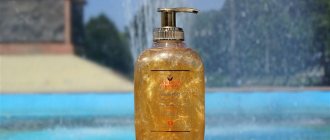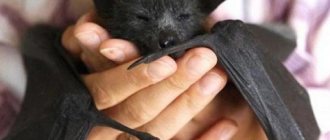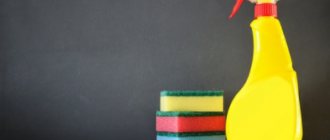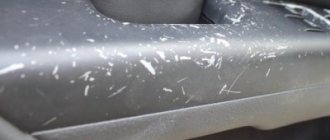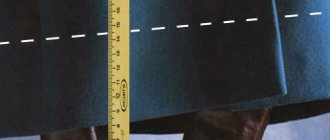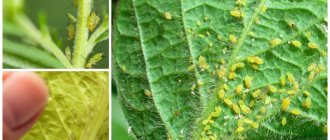Share on social media networks:
Stationery products are very popular among schoolchildren, students, office workers, teachers and other people who very often have to work with papers and documentation. Modern technologies have made it possible to create a tool that will make your work as easy as possible and help you quietly correct mistakes - a proofreader. But the white liquid tends to dry out over time, and then we ask ourselves how to dilute and dilute the corrector at home to maximize its service life. In this article we will tell you the most effective ways to achieve the desired result.
How to dilute alcohol or oil corrector?
Stationery products are extremely popular among teachers, schoolchildren, students, office workers and many others. The presence of a large amount of documentation also implies errors, which sometimes need to be corrected in a minimum period of time. A proofreader will help make your work easier and save sheets for reprinting. The white liquid in a jar with a brush sometimes dries out at the most unpredictable moment, which is why you have to use all available means. Sometimes the corrector ceases to perform its function even before the end of its service life. In this article we will try to talk about the most popular and effective methods of dissolving concealer and prolonging its usefulness.
Turpentine for oil paints
Turpentine is currently a popular paint thinner. In addition, it is used in the production of rosin, as well as dammar. It can also be found in copal-based varnishes. The composition of turpentine is complex, and in itself it is like an essential oil.
Types of turpentine for oil paints:
- Stump turpentine. It is made mainly from the bark of coniferous trees, as well as stumps.
- Wood turpentine. In production, tree branches and bark, which contains resin, are used. In its original form, such turpentine is a brownish liquid, which disappears immediately after repeated processing.
- Turpentine turpentine. This type of solvent can only be compared with real essential oil, since it is obtained by distilling the resin and resinous materials of various types of coniferous trees. The valuable properties of this oil are not lost even after secondary processing, which is its undoubted advantage.
How to dilute the corrector?
Share on social media networks:
Stationery products are very popular among schoolchildren, students, office workers, teachers and other people who very often have to work with papers and documentation. Modern technologies have made it possible to create a tool that will make your work as easy as possible and help you quietly correct mistakes - a proofreader. But the white liquid tends to dry out over time, and then we ask ourselves how to dilute and dilute the corrector at home to maximize its service life. In this article we will tell you the most effective ways to achieve the desired result.
Solvent 647 for oil paints
Solvent 647 is a fairly strong, colorless chemical that is highly flammable and also emits a strong, unpleasant odor, which is quite typical for this type of solvent. This liquid is often used to dilute alkyd enamels and pentaflathein enamels. They are often used to dilute varnishes or putty.
The surfaces to be painted are first degreased with a solvent. Various industrial tools and parts are also washed with this liquid, and in addition, solvent 647 is used to clean contaminated fabric.
When diluting paint, you should be extremely careful in its ratio of solvent, since if the amount of solvent is incorrect, the paint can easily be damaged. In diluted form, the paint is used for better penetration into the surface material. A mixture of paint and solvent is also used as a primer.
Mix it well for 10-20 minutes until smooth.
Table. Physico-chemical parameters of solvent 647.
| The name of indicators | Standard according to technical specifications |
| Ethyl ether volatility | 8 – 12 |
| Appearance | Homogeneous transparent liquid without mechanical impurities |
| Acid number, mg KOH/g, no more | 0,06 |
| Color | Not darker than the reference solution |
| Mass fraction of water according to Fischer, %, no more | 0,6 |
| Coagulation number, %, not less | 55 |
| Suitability for thinning nitro enamels | After drying, there should be no whitening of the film, which should have a smooth surface without dull spots. |
The whole truth about the proofreader
Despite the popularity of this stationery product, today there is no universal composition of correction fluid. It is a kind of proprietary secret of each specific manufacturer.
However, the following chemicals are present in each formulation in varying proportions:
- calcium carbonate;
- titanium dioxide;
- highly purified gasoline.
But the most important component is the base of the proofreader, which is known to almost every person interested in this issue, because it is indicated directly on the label of this stationery product.
Important! If you need to remove some inaccuracy in a document right now, you can use our ideas on how to erase pen from paper without a trace.
Liquid types of correctors can be divided into the following categories:
- water based;
- with an alcohol component;
- emulsion based.
The decision on how to dilute the concealer should be made based on the basis of the substance it contains.
Water corrector
Water-based corrective compositions are environmentally friendly and safest for the human body, and therefore are most popular among schoolchildren. The main advantage of this product is the good application of the substance on almost any type of paper.
However, like any product, water-based paint has its drawbacks - long drying time. The substance applied to the paper can dry for about a minute, which can be quite inconvenient when writing.
Important! It is also worth remembering that such correctors do not tolerate low temperatures well, and therefore hypothermia should be avoided when storing them.
Alcohol bar-corrector
Alcohol-containing corrective compositions are more practical to use than their water-based counterparts - due to almost instant drying. In addition, such products are characterized by increased resistance to freezing.
However, alcohol-based barcode corrector has a pungent and unpleasant odor; the substance is easily flammable, and therefore dangerous.
Oil based concealer
The emulsion composition combines all the advantages of alcohol and water-based bases. This corrector has no pungent odor, is non-flammable, dries quickly and is absolutely resistant to low temperatures.
However, the cost of such office supplies is an order of magnitude higher than that of alcohol or water analogues. Yes, and finding such a tool is quite difficult.
Best answers
ELENA:
Liquid stroke correctors can be made on the basis of alcohol, which ensures quick drying of the correction fluid (the label usually indicates Fluid) and water-based, which attracts consumers with a lower price, lack of odor and the ability to do without a special thinner of the stroke corrector (the label indicates Aqua) . Look what yours is. The latter can be diluted with water.
Svetlana Nosova:
Correctors are sometimes sold directly with solvent. Perhaps they are available separately.
Olga P.:
The answer is very simple: Oil-based correctors can be diluted with a drop of oil. Alcohol-based correctors can be diluted with alcohol. Water-based corrector - a drop of water.
ZALILOV ILNUR:
The alcohol-based corrector was diluted with regular cologne.
Tatyana Biryukova:
Diana Moroz:
What should I do if the text proofreader has become lively? Answer please)
Andrew Brown:
The Erich Krause corrector has dried out. I got good results when I diluted it with a 50/50 mixture of acetone and ethyl alcohol.
Victoria Gushchina:
If it says Fluid, then you can dilute it with alcohol or cologne (like felt-tip pens); if it says Aqua, then with water. If the label has worn off, you need to smell it. Stinks-FLUID. Doesn't stink - AQUA. I overdid it with the dilution - dry it (leave it for a minute with the lid open).
We suggest you familiarize yourself with How to collect mercury from a thermometer at home?
Georgy Sutyagin:
There is no corrector that is too liquid. As usual, many people do not know that the can contains a mixing ball. Before use, you need to shake the can so that the ball mixes the contents. So that the liquid does not separate from the paint.
Natalya Nikolaevna Kvashina:
wow that helped thank you!!!!
Zheka Born:
The attache corrector was diluted only with White Spirit! Neither alcohol, nor acetone, and especially water, did not help!
Types of correctors
Depending on the type of masking layer that is applied to the surface of the paper, correctors can be divided into dry and liquid. Each of these categories has its own characteristics.
Liquid correctors
There are two main types of stationery of this type:
- Correction fluids. Such chemical compositions are sold in small bottles and are applied to the surface of a paper sheet with a blot using a brush, applicator or a special sponge. Such products are quite convenient and easy to use, but they are quite rare in modern office supplies, since manufacturers place great emphasis on producing more practical products.
- Pencil corrector. The shape resembles a regular pen with a metal tip through which the correction fluid flows out. With the help of such a tool, it is possible to precisely correct even the smallest text details.
Dry correctors
This type of stationery is represented by a correction roller tape. This dry composition is distinguished by its ease of use and the ability to continue writing immediately after masking existing blots. The width of the adhesive tape in dry correctors is usually 4-6 mm.
Important! Dry proofreaders can be quite inconvenient when correcting on paper with small line spacing and small font.
So that you don’t have to waste extra time diluting the primer, but you have to use it often, read a more detailed selection of tips on how to choose a corrector.
Chemistry in everyday life Yudin A.M. Suchkov V.N.
Window glass is also washed with a warm vinegar solution (2 tablespoons per liter of water).
An old and reliable glass cleaner is powdered chalk or tooth powder. Take 2-3 tablespoons of chalk per glass of water, mix well and, after moistening a piece of cloth with the solution, wipe the glass on both sides with it. When the glass is dry, wipe it with a dry soft cloth or paper until the chalk is completely removed.
You can quickly clean frozen window glass using a strong solution of table salt in cold water (2 tablespoons per glass of water).
How to dilute dried concealer?
The question of how to dilute the putty if it has dried is quite popular and the solution to this question depends, first of all, on the base used in production. To dilute the coloring composition you may need the following liquid substances:
- water;
- alcohol or vodka;
- specialized compositions for dissolving the corrector;
- acetone;
- nail polish remover.
Important! When bringing the dried composition into working condition, the main thing is not to overdo it with dilution. Otherwise, you risk getting a white liquid that will absolutely not cover the marks made on a sheet of paper, and therefore will become useless.
So:
- Water-based correctors do not cause any problems at all and can be easily diluted with ordinary tap water.
- To restore the functionality of alcohol-based products, any product that contains alcohol is suitable. However, it is best to choose the purest alcohol-containing formulations without flavors or dyes. After all, excessive impurities can negatively affect the quality of the corrector.
How to make your own putty with coloring
To color the putty, paints are used in powder, which is mixed especially carefully with the dough. Before you make your own putty, you need to become familiar with coloring pigments and the rules for their use.
For yellow-brown and dark yellow paints, the following putties are used for puttying:
- Grind white lead, red lead and silberglet with thickly boiled linseed oil; Add a little amber varnish to the resulting dough.
- To prepare the putty with your own hands, mix three parts of slaked lime powder with 2 parts of rye flour and 2 parts of drying oil, which, when thoroughly kneaded, produces a homogeneous plastic dough.
- Prepare a homogeneous dough-like mass from equal parts of crushed brick and lead litharge. Before applying putty, cracks and holes must be pre-lubricated with oil.
Barcode corrector: composition
Strange as it may sound, the composition of the corrector is, so to speak, the proprietary secret of each specific manufacturer. Of course, there are certain chemical components that are necessarily present in one proportion or another in the corrective composition: calcium carbonate, titanium dioxide, highly purified gasoline, etc. But it is unlikely that ordinary people will be able to fully determine the composition of a stroke, and this, in general, is not necessary, since the more important parameter of a corrector is its base, and the manufacturers do not hide it. There are three types of correctors depending on their base:
- Water-based composition;
- Alcohol-based touch-up corrector;
- Emulsion (oil) putty.
Each of the above types of office barcode corrector has its own characteristics:
- Water corrector is an environmentally friendly, odorless, non-flammable substance that covers all types of paper well. The disadvantages of this touch are that it takes a long time to dry (from 30 seconds to one minute) and does not tolerate low temperatures (meaning storage).
- Alcohol-based correction fluid is considered more effective because it dries almost instantly and is frost-resistant. However, like any alcohol-containing substance, it is flammable and also has a pungent, not very pleasant odor.
- Oil corrector - a composition that combines the advantages of water and alcohol touches - is rare in our latitudes; in order to find and purchase emulsion putty, you will have to go to many office supply stores.
Alcohol-based concealers dry almost instantly
White spirit for oil paints
The scope of the same white spirit is extremely wide. It is serious competition for turpentine, whose sales volumes fell after white alcohol appeared on the markets.
White spirit for oil paints is used in the following cases:
- To obtain an organodispersion when diluting paint and varnish coatings.
- For the purpose of diluting varnishes, primers, drying oils, enamels, car preservatives, etc.
- Used for washing brushes after finishing work.
- In order to degrease the surface if this kind of problem suddenly arises.
- Can be used as a solvent for rubber or alkyds.
This solvent is extremely popular due to its availability, because its price is quite reasonable, even taking into account the wide range of its applications.
When using white alcohol, the cost of paint or other type of paint coating is significantly reduced, but the quality of the paint remains unchanged.
If desired, it is even possible to find a type of white alcohol that does not have its characteristic pungent odor.
Rules for using white spirit for oil paints:
- We should not forget about safety precautions, so you should avoid finding solvents near any open flame sources or switches. It is also worth paying attention in advance to the fact that solvents of some compositions can spontaneously ignite under the influence of temperatures.
- You also need to pay attention to the rather pungent odor of the substance. Therefore, paint should be diluted only in well-ventilated areas or even in the open air.
- Due to the chemical composition of solvents, they should not come into contact with the skin or mucous membranes. Otherwise, you must immediately rinse the area where the substance comes into contact with water. Clothes can also be damaged by exposure to strong chemicals.
Dry and liquid correctors
Office proofreaders can be liquid or dry. The first includes a liquid stroke and a correction pencil, the second - a tape-type corrector.
- Correction fluids are produced in small bottles with a brush, applicator, and sponge applicator built into the cap. This corrector is quite simple and easy to use: just shake the bottle, dip a brush in the liquid and paint over the area that requires correction in one motion. Nevertheless, correction fluids are still considered a somewhat outdated type of touch, since manufacturers have long launched the production of more convenient and ergonomic forms of putty.
- The corrector pencil is no different in shape from a regular pen, but instead of paste, it is filled with correction fluid, which flows out through a hole in the metal tip (hole diameter - 1 mm). Using a correction pen, you can precisely correct the smallest details of the text, even the “flaws” of individual characters. But “painting over” a large piece of text with such a pencil will not be very convenient; here the advantage clearly remains on the side of the correction fluid in a bottle with a brush (one stroke and a whole line is painted over).
- Corrective roller tape is the latest “fashion” in the world of correctors. This is a dry composition contained in a convenient and ergonomic roller. Using a tape corrector, you can correct the required section of text in a matter of seconds: the tape applied to the paper (if, of course, the corrector is of high quality and is used correctly) will be practically invisible not only by sight, but also by touch. Correction tape is not without its drawbacks: with its help it is impossible to precisely correct minor flaws in symbols; The width of the tape is standard (4-6 mm), that is, to correct small font with small line spacing, you can go beyond the edge of the line.
When purchasing a tape corrector, give preference to models with a transparent case, which will allow you to control tape consumption
Many people ask the question “How to dilute the barcode corrector?” The answer to this question is very simple: water-based compositions can be diluted with water, alcohol-based ones - with alcohol or vodka (preferably a pure substance without any impurities or flavorings that can spoil the quality of the correction fluid).
As you can see, there is still no universal corrector; each type has its own area of application. However, this is not a particular problem, since the cost of corrective compositions will allow everyone to easily purchase all three types of barcode correctors and, if necessary, use one or another option.
Office workers, students, schoolchildren and people who regularly deal with documentation have been actively using the proofreader for quite some time. A small swipe of the brush, and the mistake was gone. At the same time, the most important thing is that your hands do not tremble, and no one interferes, otherwise the wonderful remedy will spread unsightly as a white spot on your favorite skirt or blouse.
Photo: https://utugim.ru/wp-content/uploads/2018/01/39i5a5054e313a9e6.22347916-834×469.jpg
Putty for stone
For dry stone structures, mix 2 parts of lead litharge with 1 part of powdered lime and 1 part of fine sand. The resulting mixture is stored in tightly sealed boxes. Immediately before use, putty is prepared from it by mixing with hot linseed oil. Before making stone putty with your own hands, heat the mixture to a temperature of 40 degrees Celsius.
For stone structures exposed to moisture, take 5 parts of freshly burnt lime powder, 2'/2 parts of crushed brick, 1/2 part of scale and 1/4 part of manganese oxide. Flaxseed oil is added to this mixture to obtain a thick dough, which is dissolved in a mortar until smooth. Before use, dry the cracks thoroughly and spread them with oil. The putty hardens after 8-10 days.
Putty for stone walls of water pools is prepared as follows: fuse 48 parts of rosin, 6 parts of wax, 2 parts of shellac and 2 parts of mastic and add, with constant stirring, 6 parts of turpentine oil, 3 parts of crushed sulfur and 16 parts of crushed brick. The cracks are heated and putty is applied with hot putty, which quickly hardens. Leveling is done with a spatula or chisel.
A hard and waterproof putty can be prepared from Portland cement or slaked lime and a concentrated solution of Cologne glue. The putty is used freshly prepared; hardens after 3 days and then becomes impermeable to water.
For underwater stone structures, prepare a mixture of 11 parts of air-disintegrated lime, 5 parts of crushed brick, 1/2 part of crushed glass, 1 part of scale and 4 parts of hot linseed oil. This mixture is mixed well, as a result of which a plastic mass is obtained, which is spread into the cracks, previously lubricated with oil.
According to another recipe, they take 700 parts of well-sifted crushed brick, which must be well fired and completely dry. Then 625 parts of the best plaster, 500 parts of iron filings, 50 parts of vitriol, 100 parts of uncrushed ink nuts, 500 parts of bolus, 500 parts of potash, a handful of table salt, a little fresh ox blood, egg white and vinegar. From all this a soft dough-like mass is prepared, which is spread into the cracks. The same putty can be suitable not only for underwater stone structures, but also for smearing iron hooks, bars, etc. into stones instead of lead.
To grease marble, mix fresh cottage cheese with ox blood and add to the mixture such an amount of sifted quicklime powder until a soft plastic dough is formed.
To align the fallen parts and to glue them, the so-called sculptural putty is used, which hardens in air like stone. Prepared from plaster, marble dust and liquid glue.
For alabaster, burnt gypsum is placed in a cold saturated alum solution, then calcined again, pounded and dough is prepared into it, kneading it with an alum solution. Such plaster hardens more slowly than ordinary plaster prepared with water, but it becomes hard as stone and is suitable not only for plaster figures, but also for marble.
A good putty can be prepared by rinsing fresh cottage cheese several times with water, then squeezing it out and mixing it with 5-6 parts of a saturated solution of liquid glass.
How to quickly remove concealer stains
Fresh stroke marks are immediately wiped off with a damp or dry cloth. In order not to greatly smear the trace and not increase the scale of the existing “tragedy,” you need to move in the direction from the edges to its central part, and not vice versa.
After first aid has been provided to the clothes, you should take the jar and read the composition of its contents. Subsequent steps to remove stains from the corrector depend on the base that was used in its production.
Oil, alcohol or water
The water-based streak can be removed by locking yourself in a nearby washroom that has a sink. You will need a handkerchief, a piece of fabric or a paper napkin. Having wetted and wrung out the rag, you need to rub it over the stain several times, while trying not to rub it into your clothes. The marks should disappear.
Returning home, the soiled item must be soaked in warm water. You need to arm yourself with laundry soap, since it can deal with almost any stain - rub the spilled area well, rinse and hang out to dry.
If you don't have soap, powder, shampoo or dishwashing detergent may work. Squeeze a small amount of product (about the size of a pea) onto the stain, lather thoroughly, and leave for 10 minutes. and rinse with water.
Important: Dried residue from the fabric must first be scraped off with a toothbrush, and only then can you start washing.
Alcohol correctors
The problem becomes more complicated if the stroke contains alcohol. Regular soaking and soap will not help here; you need cologne, shaving lotion or vodka. An alcohol toner or a solvent specifically designed for concealer (available at a hardware store) may also work.
Dried stains from clothing must be removed with a brush or nail file. Turn the item inside out and place a white cloth under the stain.
Take a cotton swab or disk and moisten them with cologne or vodka. Wet the fabric around the stain with water to prevent the putty from spreading. Using a stick/disk, slowly remove marks, moving towards the center. To prevent the stroke from being absorbed even further into the fabric, you should not press too hard.
To remove residual cleanser and concealer, you need to have a piece of cotton wool or a white cloth on hand. Immediately place the cleaned item in the washing machine and wash it at maximum speed. It’s a good idea to add some kind of “Vanish” product, specifically designed to remove various stains.
Important: Contamination from the stroke should not be treated with perfume or eau de toilette. There is very little alcohol in them, but the smell is quite persistent and will not be easy to get rid of later.
Next, we recommend watching a video that shows how to properly remove traces of putty from clothing quickly and efficiently:
Emulsion-based correctors
If you do happen to encounter just such a putty, you will have to work hard to remove it.
Soiled items cannot be pre-soaked and washed. Dried residues must be removed with a brush. Apply the cleaning agent from the reverse side, and place a white cloth to absorb dirt.
Emulsion or oil based concealer can be dissolved using:
- kerosene;
- acetone or nail polish remover;
- metalated alcohol;
- white spirit;
- paint solvent;
- ammonia diluted with water (in a ratio of 1 to 2).
Some use gasoline. It will certainly remove the stain, but the persistent odor is so strongly absorbed into the item that it is impossible to get rid of it even after the 5th wash using fabric softener.
Apply 2-3 drops of cleaning agent to the contaminated area with a cotton swab and wait 15 minutes for the putty to dissolve. Soak a cotton pad in the liquid from the corrector and clean it off from the edges with gentle movements. Next, to remove any remaining stains, blot everything thoroughly with a paper napkin, and then wash the item using high-quality powder.
Recommendation: You must first check how the product reacts to the product used. A drop of cleaning fluid intended to remove the corrector is applied to the back seams. If the clothes have not changed their color, then you don’t have to worry and feel free to continue cleaning the dirt.
Glazier's oil putty
Oil putty, known commercially as glazier's putty, since it is necessary for inserting glass, is prepared as follows: Spanish white is ground into powder, formed from it into a truncated cone or truncated pyramid, and at the top a depression is made into which a small amount of linseed oil is poured. , so that the white will turn into a dough-like mass. When the entire mass turns into dough, stop adding oil, knead the resulting dough and knead well. Before you make putty, learn some secrets of its use.
After this, the putty is cut into pieces and crushed with a wooden mallet. The better the putty is hammered out, the more uniform and flexible it will be and the better it will adhere to bodies.
If such putty is wrapped in canvas soaked in oil, it can be preserved for a long time without change, otherwise after a few days it will become fragile.
Oil putty can be used to putty surfaces to be painted with oil paint.
Puttying can only be done when the wood has already been coated with paint once, because the putty will not stick to damp wood. The putty is rubbed into the cracks and holes using a spatula and, when it dries well, it is polished with pumice soaked in water until the surface takes on a smooth appearance.
Before you make putty at home, you need to remember that the oil type is unsuitable for light paint, because it forms yellowish spots and stripes that will show through. In this case, use putty made from white lead and linseed oil. The method of preparing this putty is the same as oil putty.
When it is necessary to touch up or renew the paint with paint of a different color, the putty should be the same color as the last paint.
How to remove dried concealer
Is the dash tape stuck to the skirt? You need to take a solution of laundry soap and moisten the stain with it. Then carefully separate the tape from the clothing and use a brush to thoroughly remove all remaining putty. To consolidate the achieved result, you need to wash the item well.
Photo: https://koffkindom.ru/wp-content/uploads/2016/11/process_chistki_odezhdy.jpg
Removing concealer stains from clothes will not take much time and, most importantly, will cost much less than buying a new item. But it is still better to dry-clean items made of silk or other delicate materials, since only specialists know what products should be used so as not to completely ruin the item.
Putty for iron
Prepare a dough from 2 parts iron filings, 1 part iron sulfate and vinegar. This dough is driven into the seams as tightly as possible with a chisel and hammer. This putty is used to repair iron tanks.
To seal iron hooks, bolts and other things into stone, putty is used, for the preparation of which you take 7 parts of gypsum, 2 parts of protein and water. Iron putty should be used immediately after preparation.
According to another method, for the same purpose, mix 2 parts by weight of crushed brick, 1 part of crushed slaked lime and 72 parts of iron filings with water.
An excellent and cheap material for smearing iron into stone is Portland cement, which is mixed with some iron filings or sifted scale and then turned into a dough by adding water. This putty dries quickly and then acquires the hardness of stone.
Oil paint on drying oil
Today, drying oil is considered a universal solvent. It is also part of the paint; thanks to it, when applying paint to the surface, a thin film is formed.
The type of drying oil that should be used depends directly on what type is contained in the paint itself. In addition, all oil paints are classified by their other components; they may contain various pigmenting substances and fillers. If the paint contains only one component, then the name of the paint is given precisely by the name of this very component.
The name may also contain the number 2, which means that the paint and varnish material is applicable to all surfaces if the paint is diluted with the same drying oil that is included in its composition.
There is also a special classification for drying oil types of paint:
MA-0.25. Indicated on the packaging. This mark indicates that the paint contains harmful toxic substances that can have an adverse effect on health, as well as emit a characteristic odor for a long time after the coating has dried.
MA-0.21. Paints based on natural drying oil. Percentage content: 96% natural oils (soybean oil, sunflower oil, flax oil) and 4% driers. Mainly used for painting walls, windows, doors both outside and inside.
GF-0.23. Halyphthalic drying oil is a natural substitute.
PF-0.24. This is how pentaphthalic drying oil is labeled. It contains drying agent or glycerin. 50% consists of natural materials.
In accordance with the standards, the packaging must indicate which solvents should be used with this type of paint, as well as its consumption per 1 square meter when applied in 1-2 layers.
Oil paints are the most durable and long-lasting coating among other paints and varnishes.
They are great for applying to plaster, metal, concrete and wood. This coating also protects the surface from harmful phenomena such as corrosion, rotting, and protects from excess moisture. In addition, this type of paint and varnish products is also used as a primer and has decorative value. They are brighter, and, of course, can be used not only for painting walls outside the house, but also inside it.
They are indispensable for creative individuals, because this is how masterpieces of fine art are often created. So another advantage in favor of oil paints is their prevalence and applicability in completely different areas of life.
Before you decide what would be the best way to dilute the paint, you need to decide for yourself what exactly you should buy. Perhaps a solvent, or perhaps a thinner. Solvents are best used in cases where the paint has simply hardened and dried.
After adding it, you need to wait some time, from a couple of minutes to a couple of hours, so that the paint acquires the consistency you need. Then you can work with the material without any problems. And in the case when the paint has thickened, it is better to use a thinner. With its help, you will also give the paint the desired consistency, since substances of this kind reduce the viscosity of the paint and varnish composition.
